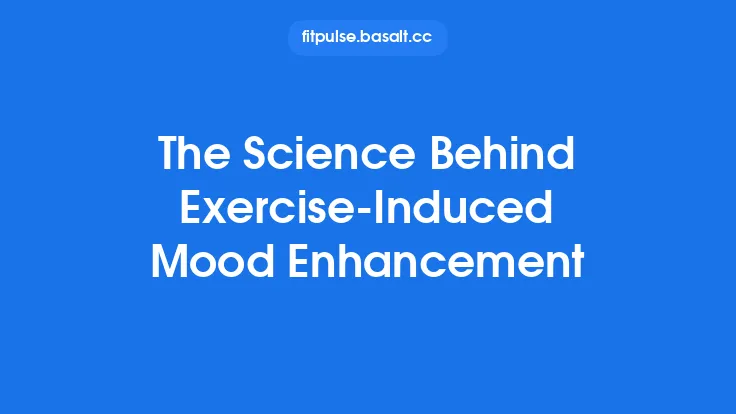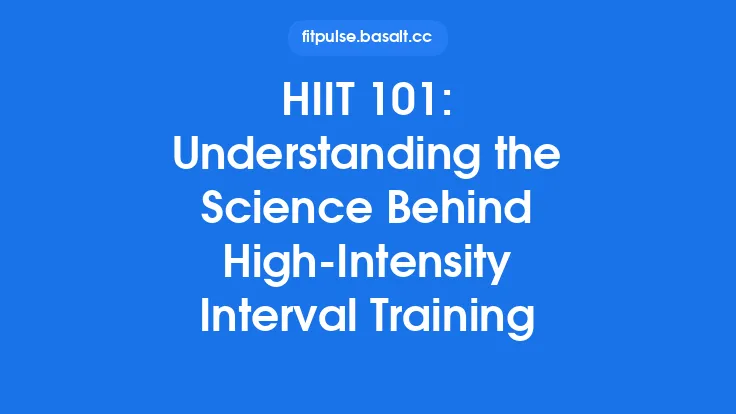Artificial intelligence has moved far beyond simple step counters and calorie estimators. One of the most transformative applications emerging in the fitness world is AI‑driven exercise‑form feedback. By analyzing a user’s movement in real time, these systems can point out subtle deviations, suggest corrective cues, and ultimately help athletes and recreational exercisers perform each repetition with greater efficiency and safety. The science behind this capability blends computer vision, biomechanics, sensor fusion, and advanced machine learning. Understanding how these components interact provides insight into why AI feedback is becoming a trusted companion in modern training environments.
How Computer Vision Captures Human Motion
At the core of most AI form‑feedback solutions lies computer vision, the field that enables machines to interpret visual data. Modern systems typically rely on one of two approaches:
- 2‑D Pose Estimation – Using a single RGB camera, algorithms detect key anatomical landmarks (e.g., shoulders, elbows, hips, knees) and map them onto a skeletal model. Popular frameworks such as OpenPose, MediaPipe Pose, and DeepLabCut have demonstrated sub‑pixel accuracy in controlled lighting conditions.
- 3‑D Pose Reconstruction – By incorporating depth sensors (e.g., Intel RealSense, Azure Kinect) or multiple synchronized RGB cameras, the system can infer the three‑dimensional coordinates of each joint. This adds a crucial layer of information for exercises where depth cues are essential, such as squat depth or overhead press alignment.
Both methods begin with pre‑processing steps: background subtraction, image normalization, and temporal smoothing to reduce jitter. The resulting joint trajectories become the raw material for subsequent biomechanical analysis.
Biomechanical Foundations of Form Analysis
Accurate feedback requires more than just locating joints; it demands an understanding of the underlying mechanics of human movement. Two biomechanical concepts are especially relevant:
- Kinematics – Describes the geometry of motion (position, velocity, acceleration) without regard to forces. For example, the angular velocity of the knee during a squat can indicate whether the descent is controlled or overly rapid.
- Kinetics – Relates to the forces and torques that produce movement. While direct force measurement typically requires force plates, AI systems can estimate joint moments by combining kinematic data with anthropometric models (segment lengths, mass distribution) and applying inverse dynamics.
By integrating these concepts, AI can flag issues such as excessive lumbar flexion, valgus knee collapse, or insufficient hip extension—each of which has documented links to injury risk.
Machine Learning Models for Pose Estimation
Pose estimation itself is a machine‑learning problem. The most successful models today are deep neural networks trained on massive annotated datasets:
- Convolutional Neural Networks (CNNs) – Extract spatial features from images, enabling the detection of joint heatmaps. Architectures like Stacked Hourglass Networks and HRNet maintain high-resolution representations throughout the network, improving precision.
- Temporal Convolutional Networks (TCNs) and Recurrent Neural Networks (RNNs) – Capture motion continuity across frames, reducing flicker and improving the detection of fast, dynamic movements (e.g., plyometric jumps).
- Transformer‑based Vision Models – Recent research shows that Vision Transformers (ViTs) can rival CNNs in pose estimation, especially when paired with large-scale pre‑training on video data.
Training these models involves supervised learning with ground‑truth joint coordinates, often derived from motion‑capture systems (e.g., Vicon) that provide millimeter‑level accuracy. Transfer learning allows a model pre‑trained on generic human activities to be fine‑tuned for specific exercise domains, reducing the need for exhaustive labeling.
Integrating Wearable Sensors for Enhanced Accuracy
While vision alone can achieve impressive results, combining it with wearable sensors (inertial measurement units, EMG, pressure insoles) creates a more robust feedback loop:
- Inertial Measurement Units (IMUs) – Provide accelerometer and gyroscope data that can correct drift in visual pose estimates, especially when the camera view is partially occluded.
- Electromyography (EMG) – Offers insight into muscle activation patterns, allowing the system to verify whether the intended muscles are being recruited (e.g., quadriceps vs. hamstrings during a squat).
- Pressure Sensors – Embedded in insoles or mats, they can detect weight distribution and ground‑reaction forces, complementing visual cues about foot placement and balance.
Sensor fusion algorithms, often based on Kalman filters or particle filters, merge these heterogeneous data streams into a unified state estimate, improving both spatial accuracy and temporal responsiveness.
Real‑Time Feedback Mechanisms
Delivering corrective cues in real time is a delicate engineering challenge. The pipeline must process video (or sensor) data, run inference, and generate feedback within a latency window that feels instantaneous to the user—typically under 150 ms. Strategies to achieve this include:
- Edge Computing – Performing inference on the device (smartphone, tablet, or dedicated AI accelerator) eliminates network latency. Optimized models (e.g., TensorRT, Core ML) reduce computational load.
- Asynchronous Processing – Decoupling the capture, inference, and feedback modules allows each to run on separate threads, smoothing out occasional spikes in processing time.
- Multimodal Cue Delivery – Visual overlays (e.g., color‑coded joint trajectories), auditory prompts (e.g., “keep your knee aligned”), and haptic vibrations (via smartwatches) can be combined to suit user preferences and training contexts.
The feedback logic itself often follows a rule‑based system built on biomechanical thresholds (e.g., “knee valgus angle > 10° triggers a cue”). More sophisticated approaches employ reinforcement learning where the AI learns optimal cue timing and phrasing by maximizing a reward function tied to user performance improvements.
Training Data and Annotation Strategies
High‑quality data is the lifeblood of any AI system. For exercise‑form feedback, datasets must capture:
- Diverse Body Types – Including variations in height, limb length, and body composition to avoid bias.
- Multiple Exercise Variants – From basic movements (squat, deadlift) to sport‑specific drills (kettlebell swing, box jump).
- Environmental Conditions – Different lighting, backgrounds, and camera angles to ensure robustness in real‑world settings.
Annotation can be labor‑intensive. Researchers employ several tactics to streamline the process:
- Semi‑Automatic Labeling – Using a pre‑trained pose model to generate initial joint estimates, then having human annotators correct errors.
- Synthetic Data Generation – Leveraging 3‑D human models (e.g., SMPL) to render realistic video sequences with perfect ground truth, augmenting real data.
- Active Learning – The model identifies uncertain frames and requests human labeling only for those, maximizing annotation efficiency.
Validation and Reliability of AI Feedback
Before deployment, AI form‑feedback systems undergo rigorous validation to ensure they are both accurate and reliable:
- Statistical Agreement – Metrics such as Mean Absolute Error (MAE) in joint angles, Intraclass Correlation Coefficient (ICC) for repeated measures, and Bland‑Altman plots compare AI outputs against gold‑standard motion‑capture data.
- Clinical Trials – Studies involving physiotherapists or strength coaches assess whether AI cues lead to measurable improvements in technique and reductions in injury incidence.
- Usability Testing – Evaluates user perception of feedback relevance, timing, and intrusiveness, which directly impacts adherence.
A well‑validated system typically demonstrates sub‑5° angular error for major joints and a high ICC (> 0.85) for repeated assessments, aligning with the thresholds used in professional sports biomechanics.
Challenges and Limitations
Despite impressive progress, several hurdles remain:
- Occlusion and Clothing – Loose garments or equipment (e.g., barbells) can hide key landmarks, degrading pose accuracy.
- Generalization Across Populations – Models trained on elite athletes may not perform equally well for beginners or older adults.
- Interpretability – Users may receive a cue (“keep your back straight”) without understanding the underlying biomechanical rationale, limiting learning transfer.
- Latency on Low‑End Devices – Edge inference on older smartphones can introduce lag, reducing the effectiveness of real‑time feedback.
Addressing these issues requires ongoing research in robust computer‑vision algorithms, domain‑adaptation techniques, and user‑centered design.
Future Directions in AI Form Feedback
The next wave of innovation is likely to focus on three synergistic trends:
- Hybrid Modeling – Combining data‑driven deep learning with physics‑based musculoskeletal simulations to provide richer, causally grounded feedback (e.g., estimating joint loading in real time).
- Personalized Baselines – Leveraging longitudinal data to create individualized “optimal form” profiles, allowing the AI to detect deviations specific to each user rather than relying on generic norms.
- Collaborative Coaching – Integrating AI feedback with human coaches through shared dashboards, where the AI highlights objective metrics while the coach adds contextual, motivational guidance.
As computational power continues to increase and sensor technology becomes more affordable, AI‑driven exercise‑form feedback is poised to become a standard component of both professional training facilities and home‑gym setups, delivering scientifically grounded, actionable insights that help users move smarter, safer, and more efficiently.





